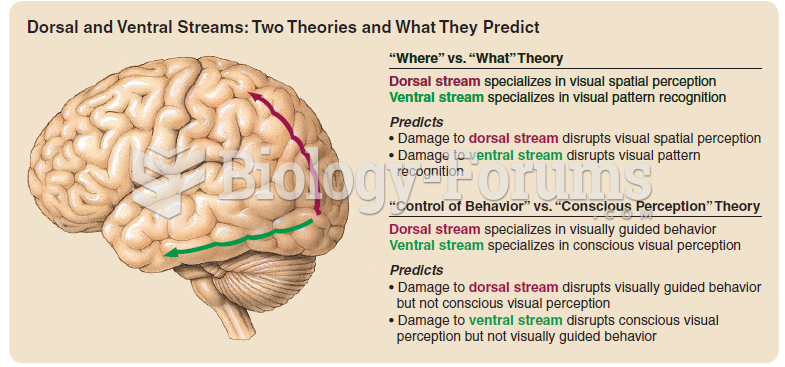Answer to Question 1
Answer:
The five channels are facial expressions, eye contact, body movements, posture, and touching. (A student may also mention paralinguistic/body chemistry as a possibility but this is not one of the primary five from the text.)
1. Facial expressions often allow us to ascertain the emotional state of a person. There are five basic emotions that appear to be relatively universal: anger, fear, happiness, sadness, and disgust. These expressions can occur in a variety of combinations to express a much wider array of responses and reactions. Micro expressions are one example of how a fleeting response can be quite telling about a person's true feelings.
2. Eye contact is usually seen as a positive and friendly interaction cue. Being unable to see someone's eyes during an interaction may make us very uncomfortable. On the other hand staring or excessive unblinking eye contact may be seen as aggressive or hostile.
3. Body movements are thought to communicate a great deal. A large number of movements or self-manipulations (e.g., touching one's leg, rubbing one's ear, etc.) maybe a sign of emotional arousal or nervousness.
4. Body postures may also tell us about another person's emotions or traits. Research on ballet postures found that diagonal and angular postures are interpreted as dangerous or threatening, while warm sympathetic characters tend to adopt more rounded postures.
5. Appropriate touching can convey quite a lot of information and is typically perceived positively by the person being touched. If a touch is viewed as inappropriate (e.g., too long, too rough, who is carrying out the behavior), then it can have a quite negative impact on the perceptions of the person doing the touching. Handshakes can convey quite important and particular information during first impressions.
Answer to Question 2
Answer:
Answer should include the following points:
1. Correspondent inference how we use others' behavior to infer various traits
2. focus on noncommon effects (effects that have only one cause)
3. focus on behavior with low social desirability content
4. Causal Attribution we use three kinds of information to determine why others behave as they do, but the focus is on internal causes vs. external causes
5. Consensus the extent to which we see similarity between others' behavior when faced with the same stimulus
6. Consistency the extent to which we see the same behavior on different occasions
7. Distinctiveness the extent to which we see the same behavior in response to different stimuli
8. Internal causes, such as traits or dispositions, are assumed to be the causal force behind a behavior when we see high levels of consistency and low levels of consensus and distinctiveness
9. External causes, such as situational constraints, are assumed to be the causal force behind a behavior when we see high levels of consensus, consistency, and distinctiveness
10. Combined or mixed causes are assumed to be the causal force behind a behavior when we see when we see low levels of consensus and high levels of consistency and distinctiveness
11. Kelley's theory can be seen in some ways as representing one instance of correspondent inference.
12. Other factors also influence our attributions regarding others:
13. the stability of the behavior over time
14. the controllability of the causes by the individual
15. These other factors are independent of the internal-external aspect of causality.







